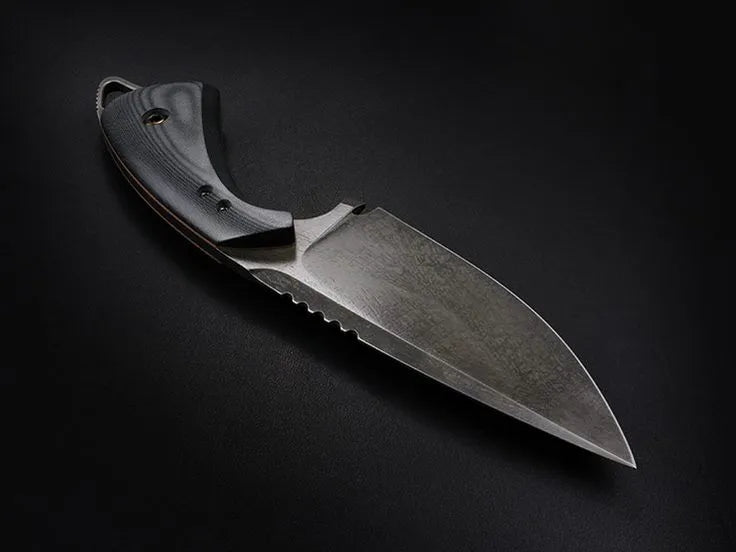
How to Replace an Old Blade on Knife?
How to replace an old blade on utility knife? A utility knife's blade must be replaced for it to continue cutting at its best and be safe to use. But how to replace an old blade on knife?
Blade dulling over time increases the difficulty of activities and the possibility of mishaps. To ensure that your utility knife stays a reliable item in your toolbox, Knives Hives offers a step-by-step procedure for how to replace an old blade on knife.
Know When to Change the Knife Blade
First, determine the signs of dullness of your kitchen knife set. It is time to change the blade if you experience:
- Difficulty while cutting
- Uneven or ragged cuts
- Applying more power than usual while cutting
By routinely checking your knife before use, you may avoid the possible safety risks of dull blades.
Safety Precautions Before Replacing Knife Blade
Before starting the replacement procedure, make sure you have a clean, level surface to work on and are in a well-lit place. Always use protective gloves to prevent unintentional cuts. It's best to have a special container for disposing of the old blade to avoid accidents.
Buy bone handle knife.
How to Replace an Old Blade on Knife?
Extend the Old Blade
When learning how to replace an old blade on a utility knife, start by carefully using the knife's mechanism to slide the blade out to its maximum length. This will expose the part of the blade that needs to be removed, making the replacement process easier and safer.
Remove the Dull Segment
The handle of many utility knives has an integrated blade snapper. Snap off the dull section, align the blade's scored line with the snapper, and gently press down. If your knife doesn't have this function, break it off carefully by holding the blade firmly at the scored line with pliers.
Retract the Blade
After removing the dull segment, fully retract the blade into the housing to prepare to insert the new blade.
Open the Knife Housing
Depending on the model, you might need to unscrew or unlatch the knife housing to reach the blade chamber. For detailed information, consult the manufacturer's instructions.
Remove the Old Blade
After opening the housing, carefully remove the old blade, being cautious not to come into contact with sharp edges.
Put a new Blade in
Select a replacement blade that fits your utility knife's dimensions. Properly align it inside the blade chamber to ensure it rests firmly and lines up with the blade slider mechanism.
Reassemble the Knife
Reassemble the knife by shutting the housing and fastening any latches or screws. To preserve the knife's structural integrity, ensure everything is securely connected.
Test the New Blade
To ensure smooth operation, carefully extend and retract the new blade many times. Then, make a few test cuts on appropriate material to ensure proper operation.
Get the best Damascus kukri knife.
How to Get Rid of the Old Blade?
Proper disposal of the old blade is essential. Before throwing it in the garbage, wrap it in sturdy tape or put it in a blade disposal container. This will prevent you or anybody else handling the garbage from sustaining unintentional injury.
How to Maintain Your Utility Knife?
Maintaining your utility knife regularly guarantees safety and prolongs its lifespan. Store the knife in a dry place to avoid rust. Keep the blade clean and clear of debris. Check the knife frequently for wear or damage, and replace any parts that need to be replaced.
The Bottom Line
Learning how to replace an old blade on knife keeps it functional. A sharper blade eases your kitchen cutting work and makes it safer than using a blunt knife. Changing your tool's blade on a regular basis is simple and significantly influences its longevity and functionality.
Always carry a pocket folding knife with you!








